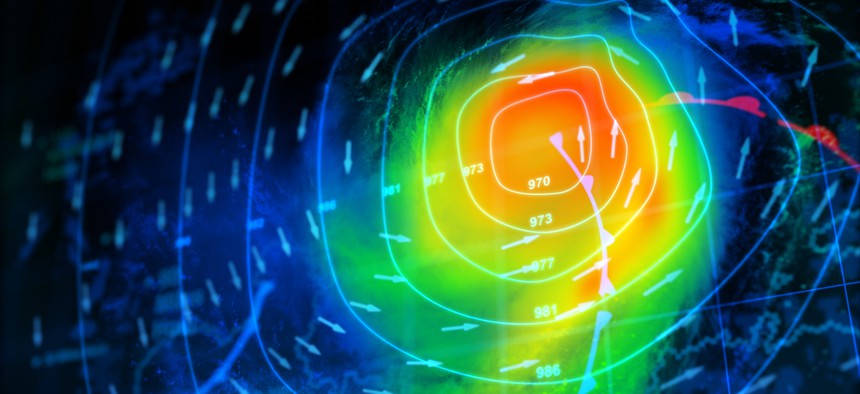NOAA, Microsoft Will Advance National Climate Efforts Through Advanced Tech Partnership

Petrovich9/Getty
Microsoft’s cloud computing and artificial intelligence tools will help NOAA further its climate and weather predictions and forecast modeling through research and development efforts.
The National Oceanic and Atmospheric Administration and Microsoft are working together to advance the agency’s climate goals under a new Cooperative Research and Development Agreement by utilizing Microsoft’s cloud computing tools while engaging in climate-related research and development.
According to Wednesday’s announcement, the agreement will further the agency’s mission “to create a climate-ready nation” by allowing NOAA scientists and engineers to work with Microsoft through research and development initiatives to reach five of NOAA’s goals over the next year.
“We are excited about the potential of partnering NOAA’s environmental intelligence with Microsoft’s cloud computing in hopes of amplifying NOAA’s ability to predict climate, weather, and ocean changes,” NOAA Administrator Rick Spinrad said.
Specifically, NOAA and Microsoft hope this will help the agency’s Earth Prediction Innovation Center carry out pilot projects by using Microsoft’s Azure cloud computing platform to facilitate Earth system modeling and research, with projects across government, academia and the private sector.
They will also leverage machine learning to improve the agency’s climate and forecast models for air quality, wildfire smoke and particulate pollution. In particular, scientists from NOAA’s Air Resources Laboratory in collaboration with Microsoft and researchers at George Mason University will explore using machine learning to improve the accuracy and computational efficiency of NOAA’s atmospheric composition models.
NOAA uses atmospheric composition modeling for its air quality forecasts, wildfire smoke plume modeling and forecasting as well as global aerosol and climate modeling. According to a NOAA spokesperson, “computational requirements for atmospheric composition modeling are orders of magnitude greater than numerical weather prediction and strain the resources of high-performance computing systems and operational forecasting centers,” thus NOAA is seeking to reduce this technical burden through machine learning.
The NOAA spokesperson noted uses for this technology could include: “air quality forecasting ensembles, downscaled atmospheric composition surface concentrations to high resolution gridded products, deterministic aerosol distribution forecasts in regional and global weather forecast models, and computational speed enhancements for full chemistry and aerosol climate models.”
In regards to NOAA Fisheries’ survey, the agreement will allow Microsoft to integrate its computing tools to advance the collecting, processing, storing and disseminating of data for the survey as well as observing data to further support sustainable fisheries.
Microsoft and NOAA will develop a new searchable ocean observations catalog that will contain case studies and how they can be used to strengthen public policy, safety, economic growth, environmental protection and climate resilience. Furthermore, this will help create a resilient and accessible weather modeling and forecasting system to allow for data collection, access and processing across NOAA and enable the use of outside data.
“We are honored to collaborate with NOAA to bring the power of cloud computing to help our nation’s leading scientists solve some of the important challenges facing the world,” said Rick Wagner, president of Microsoft Federal. “Microsoft Azure Artificial Intelligence and high-performance computing capabilities can help NOAA accelerate critical research and foster innovative approaches to mitigate the risk of climate change.”
NOAA is not funding its partnership with Microsoft because the authority in CRADA does not allow the federal government to fund an agreement. A spokesperson for NOAA stated that “instead, CRADAs allow NOAA to share ideas, technical expertise, facilities and/or other research materials and intellectual property.”
The agency previously worked with Microsoft for another CRADA exploring how Microsoft’s Azure could help NOAA’s satellites by using commercial cloud operations to control the satellites and obtain data in a cyber-secure environment, specifically providing satellite mission management to legacy satellites.
NOAA has partnered with other private sector companies through other CRADA agreements for research and development to further the agency’s mission. For example, during this year’s hurricane season, NOAA and ocean data solutions company Saildrone worked to collect hurricane data and improve hurricane weather forecasts by deploying several hurricane-tracking drones.






